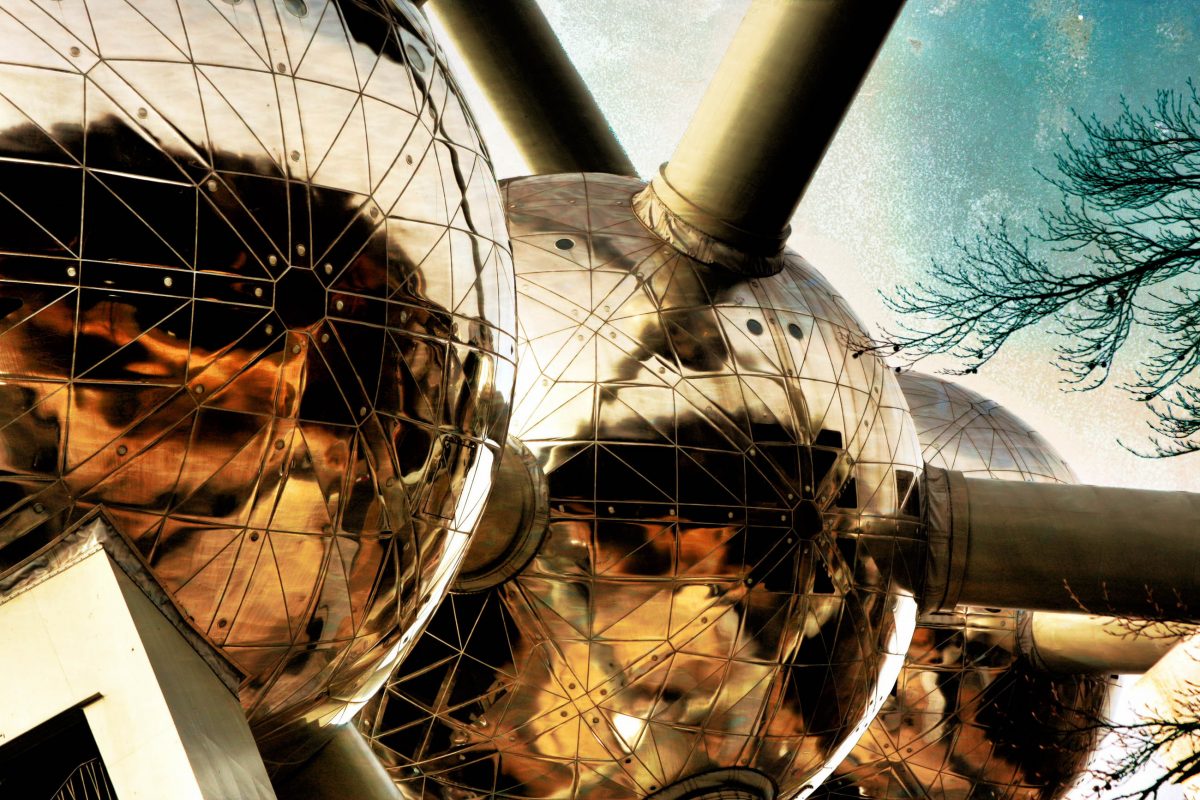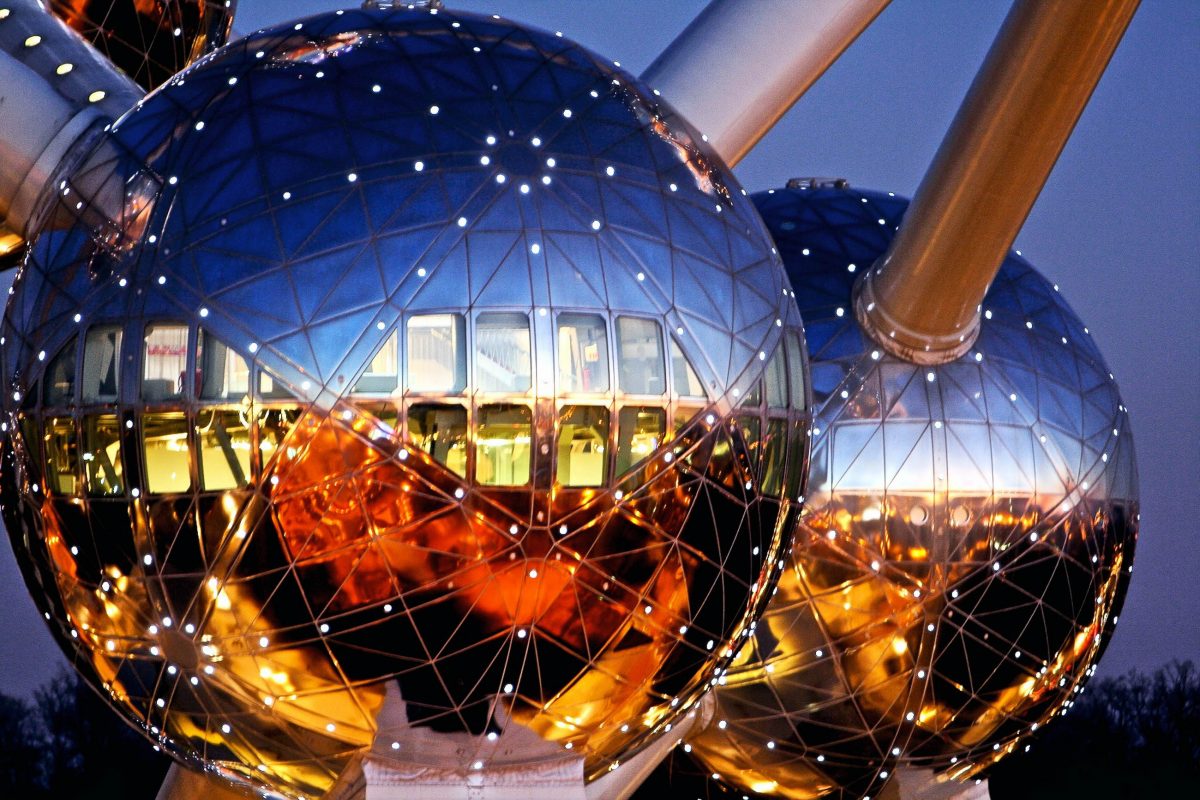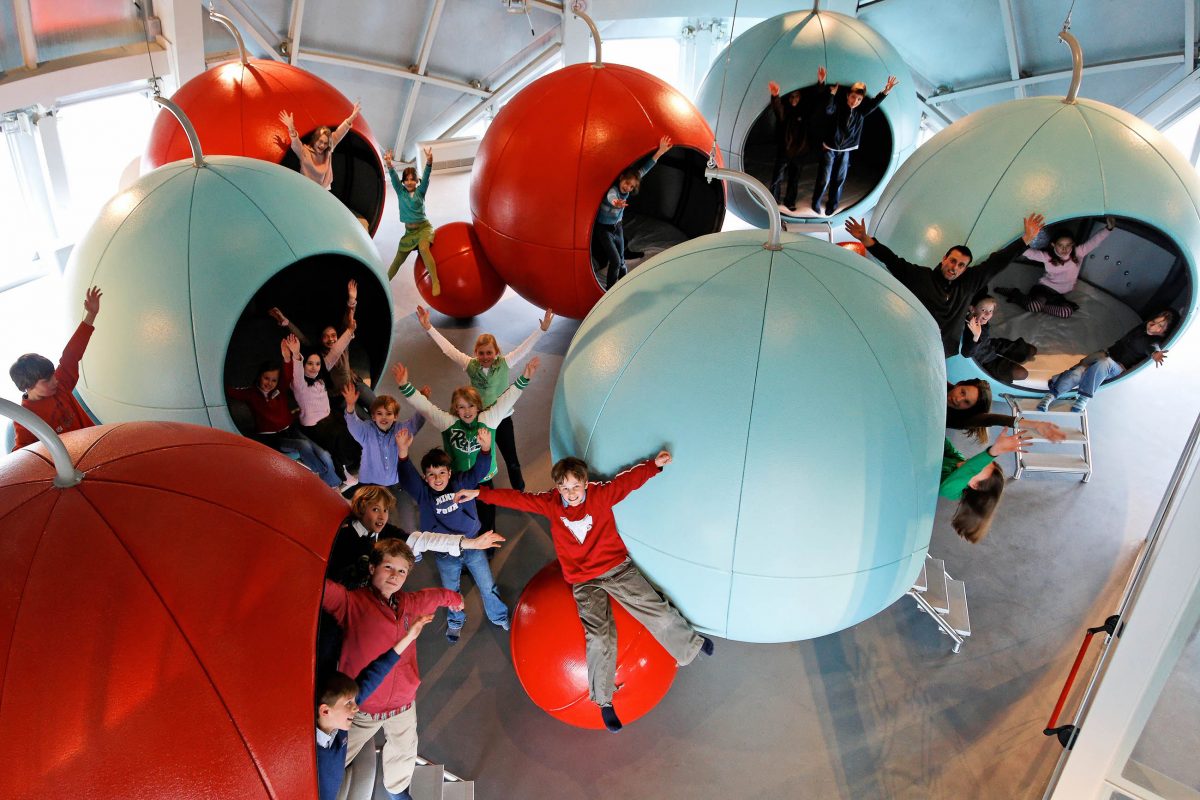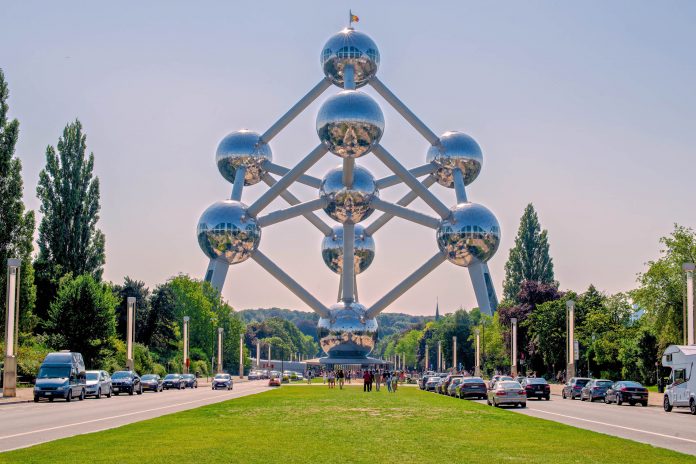Das Atomium in Brüssel wurde für die Weltausstellung 1958 errichtet. Die futuristische Stahlkonstruktion wurde mittlerweile zum Wahrzeichen der Stadt und darf bei keiner Stadtbesichtigung fehlen.
Das imposante Atomium in der belgischen Hauptstadt Brüssel wurde anlässlich der ersten Weltausstellung nach dem Zweiten Weltkrieg, der „Expo ’58“, errichtet. Das wohl berühmteste Molekül der Welt gilt heute als Wahrzeichen von Brüssel und hat auch im Inneren seiner Atome einige touristische Attraktionen zu bieten.
Inhaltsverzeichnis
BILDER: Atomium in Brüssel
Eisen im Großformat
Das Atomium ist ein 102m hohes Gebilde aus neun gigantischen Kugeln und 23m langen Verbindungsstangen, dessen Erscheinungsbild eine 165-Milliarden-fache Vergrößerung eines Eisen-Moleküls darstellt. Der belgische Ingenieur André Waterkeyn entwarf es als Symbol für die friedliche Nutzung der Atomenergie. Den Bau selbst überwachten die Architekten André und Jean Polak. Pünktlich zur Weltausstellung 1958 konnte das Atomium eröffnet werden.

Vier der obersten Kugeln haben keine Verbindung zum Boden, sondern hängen nur an den Verstrebungen. Ursprünglich sollte dies für alle Kugeln außer der untersten gelten, Tests im Windkanal haben jedoch ergeben, dass die Konstruktion bereits bei einer Windgeschwindigkeit von 80km/h umgeworfen würde. Und da in Brüssel schon Windspitzen von bis zu 140km/h gemessen wurden, entschloss man sich, vier Stützen anzubringen.
In den Abendstunden ist das Atomium am Boulevard du Centenaire besonders spektakulär anzusehen. Die untergehende Sonne spiegelt sich rotschimmernd im glatten Metall und bei Einbruch der Dunkelheit bringen zigtausende Glühlampen die Kugeln des Atomiums zum Leuchten.

Spaziergang durch die Atome
In sechs der neun Kugeln, die seit 2004 nicht mehr aus Aluminium, sondern aus rostfreiem Edelstahl bestehen, können sich Besucher aufhalten. Über die Rolltreppen und Aufzüge, die sich teilweise in den gut 3m messenden Röhren befinden, gelangen die Gäste in die runden, 18m hohen Räume des Atomiums. Einige der Rolltreppen sind bis zu 35m lang und zählen zu den längsten Rolltreppen Europas.

Im Inneren des schimmernden Metallgebildes ohne einen einzigen rechten Winkel kommt man sich vor wie in einem Raumschiff. Die unterste Kugel des Atomiums wird als Souvenirshop und Info-Zentrum zur Geschichte des Atomiums genutzt, die oberste als Aussichtsplattform und Restaurant. Der Aufzug, der die Besucher in 23 Sekunden nach oben bringt, war zu seiner Bauzeit der schnellste der Welt. Heute ist er leider vor allem klein und die Besucher müssen damit rechnen, bis zu einer Stunde in der Schlange zu stehen.

Mit spektakulärem Ausblick über Brüssel kann man sein Mittag- oder Abendessen zu sich nehmen, oder einfach nur einen Cappuccino genießen. Wer sich über die Gebäude wundert, die rund um ihn aus der Tiefe auftauchen, kann einen Spaziergang auf der Aussichtsplattform unternehmen. Dort geben bewegliche Monitore Auskunft über die Brüssler Stadtlandschaft, die sich zu seinen Füßen ausbreitet. Die anderen Kugeln werden für Ausstellungen, Veranstaltungen und Konferenzen genutzt. Eine davon ist auch als Erlebniswelt für Schulklassen eingerichtet.

Kauf ein Stück des Atomiums! Unter anderem, um die Renovierung zu finanzieren, wurden die ausgedienten Aluminiumplatten als Souvenir verkauft. Ein 2m langes Stück des alten Atomiums wurde um 1.000,- Euro an den Mann und die Frau gebracht. Eines davon ist an der Technischen Universität im niederländischen Delft zu bewundern, wo es für Forschungszwecke verwendet wird.
Das Atomium auf Wanderschaft
Außer dem Original-Atomium in Brüssel ist eine Miniatur des eindrucksvollen Gebäudes im Maßstab 1:25 auch in Mini-Europa in Brüssel und im Minimundus im österreichischen Klagenfurt am Wörthersee zu sehen. Zur Erinnerung an die Wiedereröffnung nach der zwei Jahre dauernden Renovierung 2006 wurde eine belgische 2-Euro-Münze geprägt, auf der das Atomium abgebildet ist.

Achtung Copyright!
Fotos des Atomiums dürfen grundsätzlich – auch von Privatpersonen – nicht veröffentlicht werden. Die SABAM, die belgische Copyright-Organisation, setzte durch, dass in den Vereinigten Staaten alle Fotos des Atomiums von den US-amerikanischen Seiten genommen werden mussten. Fotos in privaten Webalben, die nicht kommerziell genutzt werden, sind mittlerweile erlaubt. Über die genauen Restriktionen informiert die Website des Atomiums. Die Fotos auf dieser Website wurden mit freundlicher Genehmigung von SABAM, www.atomium.be, zur Verfügung gestellt.
Weiterführende Links:
Offizielle Website des Atomiums
Restriktionen zu Abbildungen des Atomiums





